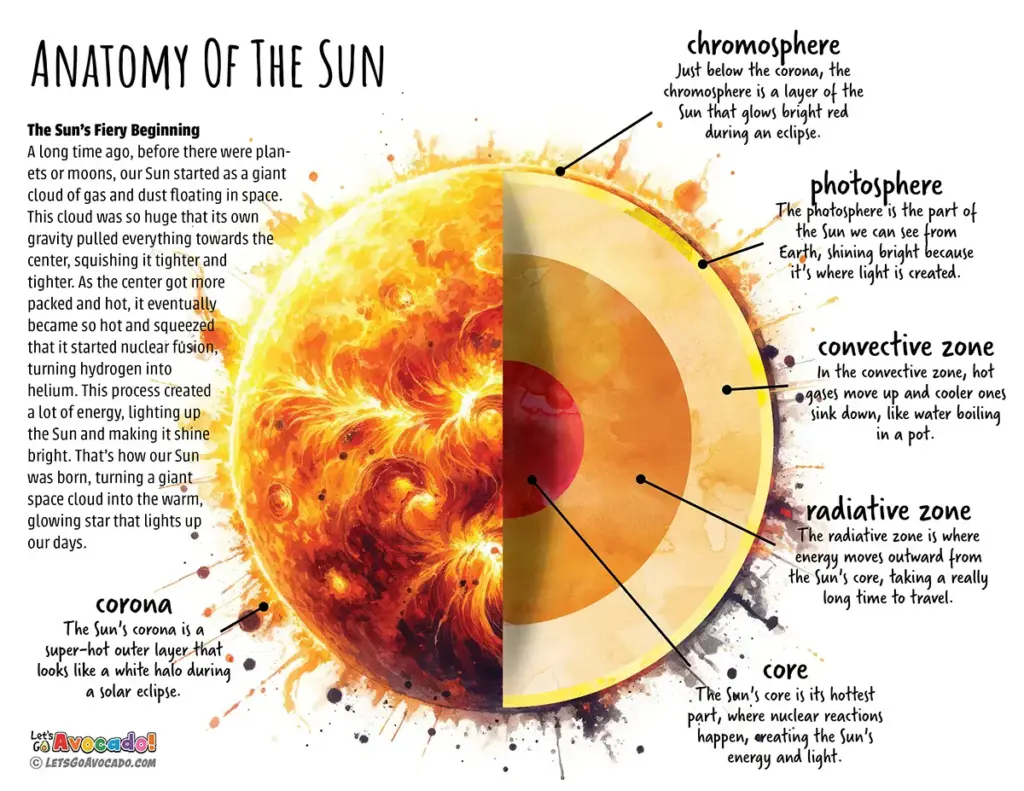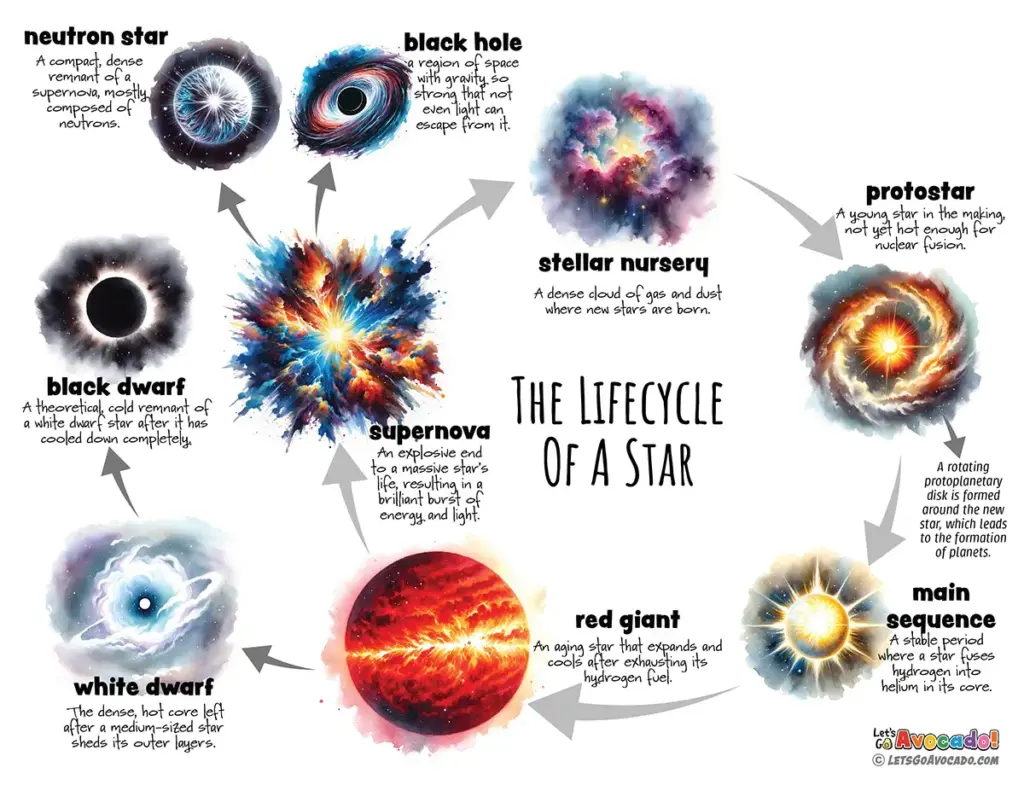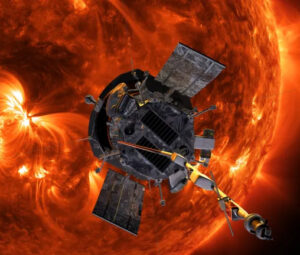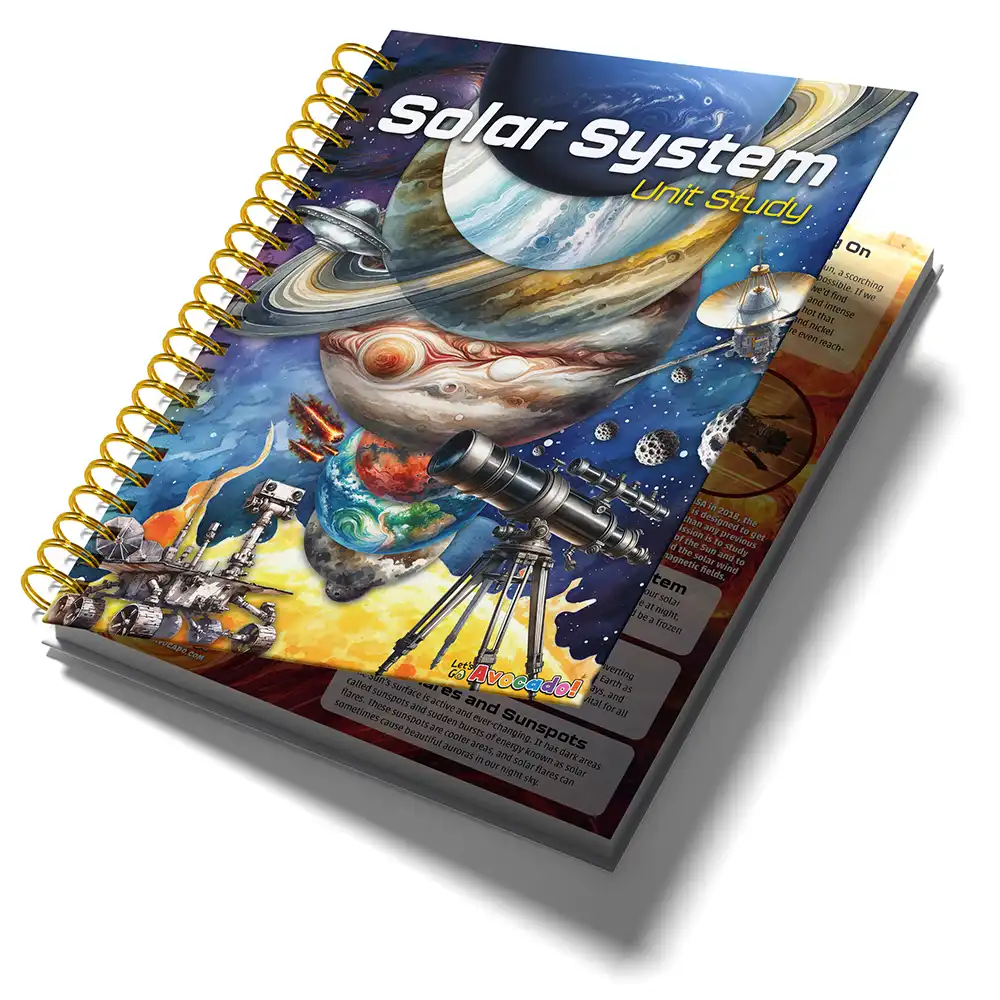This page may contain affiliate links.
Read our disclosure and privacy policy here.
Discover some amazing facts about the Sun that every kid should know, and uncover the secrets of the giant star that lights our world. This article is packed with fascinating insights about the Sun’s powerful core, its role in our solar system, and how it supports life on Earth. From its incredible energy to its impact on our planet, we’ll explore everything that makes the Sun so important. Perfect for curious minds ready to learn more about our star, this guide combines science and fun facts in an easy-to-understand way. Join us on this enlightening journey to discover the wonders of the Sun!
Table of Contents
Amazing Facts About the Sun Every Kid Should Know
What Makes the Sun Shine?
At the heart of our Solar System sits the Sun, a giant sphere packed with gas. It’s not just sitting there quietly; inside, a fascinating process called nuclear fusion takes place. Picture hydrogen atoms, which are really tiny, getting squeezed together really hard because of the Sun’s intense heat and pressure. When they merge, they create helium and unleash a huge amount of energy as light and warmth. This isn’t a slow event; it’s happening at an incredible rate, like zillions of tiny, super powerful bursts happening all the time. The energy this process sends out is massive—it’s enough to keep our entire planet lit and warm, and then some!
The Sun's Structure

This anatomy poster is available in our Solar System Study Unit. Check our downloads section for more details.
The Sun is a giant, glowing sphere made up of different layers, each playing a unique role in its behavior and appearance:
Core: This is the heart of the Sun, where all the action happens. It’s incredibly hot here, with temperatures reaching 15 million degrees Celsius (27 million degrees Fahrenheit). This is where hydrogen atoms smash into each other to create helium and release a huge amount of energy, kind of like the engine room of the Sun.
Radiative Zone: Wrapped around the core, this layer acts like a busy hallway where energy, in the form of light particles called photons, bounces around for up to a million years before moving out to the next layer. Imagine a game of pinball, but with light particles!
Convection Zone: In this layer, hot gas rises, cools down, then sinks, creating a boiling pot effect. This movement helps create the Sun’s bubbly surface pattern and drives its weather, including sunspots and solar flares.
Photosphere: This is the surface of the Sun that we see from Earth. It’s cooler than the inner layers, at about 5,500 degrees Celsius (9,932 degrees Fahrenheit), and it’s the layer that gives off the sunlight that reaches our planet.
Chromosphere and Corona: These are the outer layers of the Sun’s atmosphere. The chromosphere is right above the photosphere and leads to the corona, which is even hotter than the surface and can be seen as a glowing halo during a solar eclipse.
Each of these layers plays a crucial role in the Sun’s behavior and how it looks from Earth. It’s not just a simple ball of fire, but a complex and dynamic star with a lot of interesting processes happening at the same time!
Life Cycle of the Sun

This lifecycle poster is available in our Solar System Study Unit. Check our downloads section for more details.
Right now, the Sun is like a middle-aged star, having spent about 4.5 billion years in a phase scientists call the main sequence. But it’s not going to stay the same forever. Imagine it like a star going through its own life stages. First, it’s in its prime, shining bright and stable. But eventually, it’s going to grow bigger, way bigger, turning into what’s known as a red giant. This is when it gets so huge it could swallow up the planets closest to it, like Mercury, Venus, and maybe even Earth. After it reaches this giant size, it’s going to lose its outer parts and shrink down into a tiny, dense star called a white dwarf.
The way a star ends its life really depends on how heavy it is. Super heavy stars, eight times the mass of the Sun or more, end up exploding in a huge blast called a supernova, leaving behind either a super dense neutron star or a black hole. But our Sun? It’s not massive enough to go out with a bang like that. Instead, after it becomes a white dwarf, it’ll just cool off and give off less and less light over a long, long time.
Why the Sun is Important to Us
The Sun’s importance cannot be overstated. Its gravitational pull keeps our Solar System in order, while its light and heat make Earth habitable. The Sun drives weather patterns, seasons, and the water cycle, making it fundamental for life. Its energy fuels photosynthesis in plants, the base of Earth’s food chain, and influences Earth’s climate and environment, supporting diverse ecosystemsAn ecosystem is a community of living organisms, like insects and birds, and non-living components, like water and rocks, that interact with each other in a specific area. Learn More.
Why the Sun is Important to Us

The Sun provides the energy for all life on Earth.
The Sun’s importance cannot be overstated. Its gravitational pull keeps our Solar System in order, while its light and heat make Earth habitable. The Sun drives weather patterns, seasons, and the water cycle, making it fundamental for life. Its energy fuels photosynthesis in plants, the base of Earth’s food chain, and influences Earth’s climate and environment, supporting diverse ecosystems.
The Sun in Cultural Mythologies and Folklore

The Sun-God Ra, from Ancient Egyptian Mythology
The Sun's Influence on Science and Exploration

The Parker Solar Probe. Image courtesy of NASA. Learn more about this exciting mission on the NASA website.
Fun Facts About the Sun
- It’s so big that 1.3 million Earths could fit inside the Sun.
- Light from the Sun takes about 8 minutes and 20 seconds to reach Earth.
- The Sun is all colors mixed together, which is why it appears white in space.
FAQ: Amazing Facts About the Sun
1. How big is the Sun compared to Earth?
The Sun is massive! It’s about 109 times wider than Earth, meaning you could fit around 1.3 million Earths inside the Sun. That’s a lot of Earths!
2. What is the Sun made of?
The Sun is mostly made of hydrogen (about 75%) and helium (about 24%). These gases are in a plasma state, not gas, due to the Sun’s intense heat.
3. How hot is the Sun?
The Sun’s surface, or photosphere, is about 5,500 degrees Celsius (9,932 degrees Fahrenheit), but its core is even hotter, reaching temperatures of about 15 million degrees Celsius (27 million degrees Fahrenheit)!
4. How far is the Sun from Earth?
The Sun is about 93 million miles (150 million kilometers) away from Earth. This distance is known as an Astronomical Unit (AU), a standard measure used in astronomy.
5. Why does the Sun shine?
The Sun shines because of nuclear fusion happening in its core. This process combines hydrogen atoms into helium, releasing a huge amount of energy as light and heat.
6. Can the Sun burn out?
Yes, but not for a very long time. The Sun has been shining for about 4.5 billion years and is expected to continue for another 5 billion years. Eventually, it will turn into a red giant and then shrink down to a white dwarf, fading away.
7. What are sunspots?
Sunspots are cooler, darker spots on the Sun’s surface. They appear dark because they are cooler than the surrounding areas. Sunspots are caused by the Sun’s magnetic field.
The Sun is much more than just a bright object in the sky; it’s a powerhouse that keeps Earth alive, shapes our weather, and has been a source of fascination across cultures for millennia. It’s at the center of scientific research, helping us understand more about how the universe works. By learning about the Sun, we not only discover fascinating facts about our own solar system but also feel a connection to the people of the past who looked up in awe at the same sun that lights our days. This ongoing curiosity brings us closer to unraveling the mysteries of the cosmos and our place within it.
References
For those eager to dive deeper into the wonders of the Sun, here are three highly recommended resources that offer a wealth of engaging and educational content:
NASA Space Place (spaceplace.nasa.gov): This NASA website is a treasure trove of kid-friendly information about the Sun. It answers common questions, explains phenomena like solar eclipses and the seasons, and delves into space weather. It’s a fantastic resource for young astronomers looking to understand our closest star.
National Geographic Kids (kids.nationalgeographic.com): National Geographic Kids is known for its engaging content tailored to younger audiences. It typically features vibrant photos, fun facts, and easy-to-understand explanations about the Sun and many other scientific topics.
These resources are perfect for expanding your knowledge about the Sun and are sure to spark further curiosity and learning.

There’s a lot to explore right where we are, in our own neighborhoods and backyards! Join us while we get off the couch and explore the everyday wonders of nature, science, space, engineering, art, and anything else we stumble upon during on our adventures.




